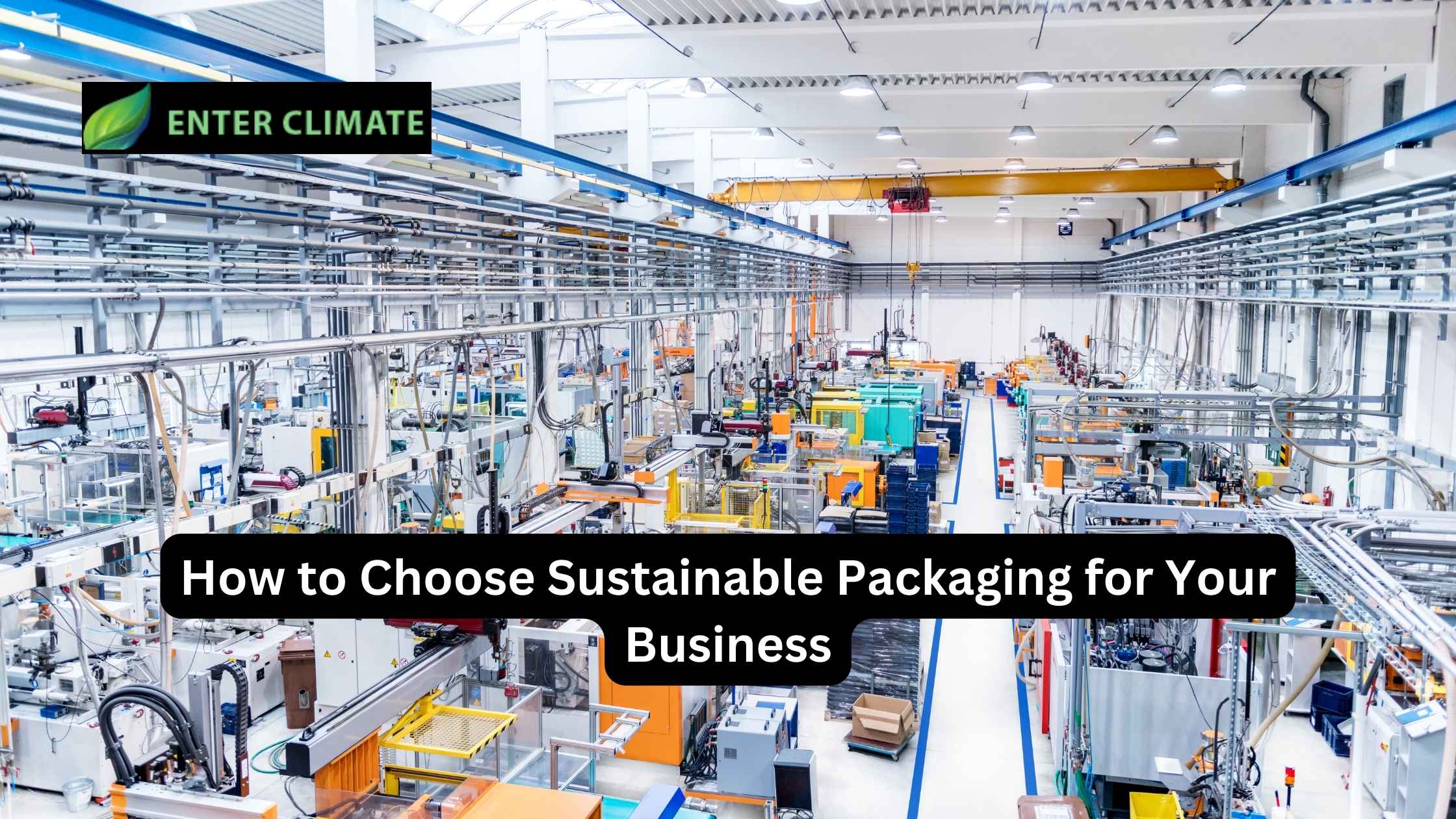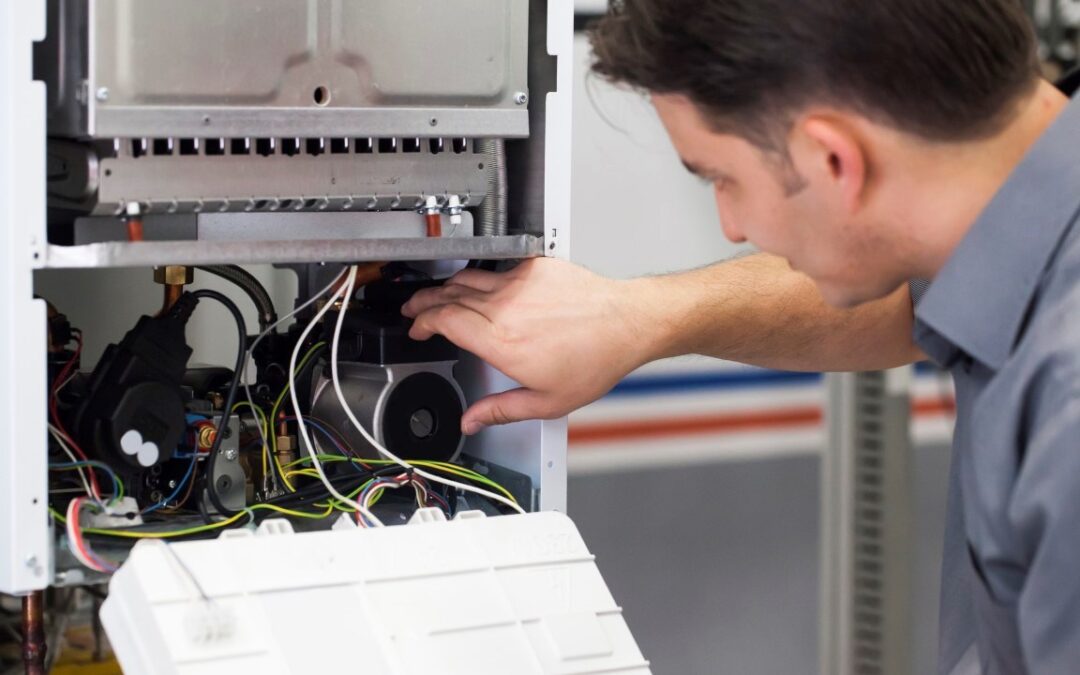As the world continues to confront the environmental consequences of plastic waste, businesses are under increasing pressure to adopt more sustainable practices. Packaging, especially plastic packaging, is a significant contributor to global plastic waste, and businesses are often the first to face scrutiny for their role in this issue.
Sustainable packaging is one of the most effective ways for businesses to reduce their environmental footprint. It helps minimize plastic waste, reduces the use of harmful materials, and supports a more sustainable supply chain. Choosing the right packaging for your products is not only an ethical decision—it can also enhance your brand’s reputation, attract environmentally-conscious consumers, and help you comply with increasingly stringent regulations.
In this blog, we’ll explore how to choose sustainable packaging for your business, providing you with a clear framework to make informed, eco-friendly decisions that align with your plastic waste management strategy.
Why Sustainable Packaging Matters for Your Business
Sustainable packaging is designed to reduce waste and environmental impact through the use of materials that are biodegradable, recyclable, or made from renewable resources. The global push to reduce plastic waste has made this a key area of focus for businesses looking to improve their environmental impact.
Here are some reasons why sustainable packaging matters:
-
Environmental Impact: Packaging is a significant contributor to plastic waste and environmental pollution. By choosing sustainable options, businesses help reduce the harmful effects of plastic waste on ecosystems, wildlife, and human health.
-
Consumer Demand: Consumers are becoming increasingly aware of environmental issues, and many actively seek out brands that prioritize sustainability. In fact, studies show that 60-70% of consumers are willing to pay more for sustainable products. By adopting eco-friendly packaging, businesses can attract and retain environmentally-conscious customers.
-
Cost Efficiency: Sustainable packaging doesn’t just benefit the environment—it can also lead to cost savings. Using recyclable or biodegradable materials may reduce waste disposal costs and lead to more efficient supply chain processes.
-
Regulatory Compliance: As plastic waste management regulations tighten globally, businesses that adopt sustainable packaging early on are better equipped to comply with legal requirements, avoiding potential fines and penalties.
-
Brand Reputation: Embracing sustainability helps businesses build a positive brand image. Being seen as environmentally responsible can enhance your brand’s trustworthiness, differentiating you from competitors who may not have made the same commitment to sustainability.
Key Considerations When Choosing Sustainable Packaging
Choosing the right sustainable packaging for your business involves several factors. It’s essential to select materials and packaging designs that align with both your business goals and your environmental commitments. Here are key considerations to keep in mind when selecting sustainable packaging:
1. Material Type and Composition
The type of material used in your packaging is crucial for sustainability. Some common eco-friendly packaging materials include:
-
Recycled Paper and Cardboard: These materials are widely recyclable and biodegradable. They are a great option for businesses looking to minimize plastic usage while providing sturdy, eco-friendly packaging.
-
Biodegradable Plastics (PLA): PLA (polylactic acid) is made from renewable plant-based resources like cornstarch or sugarcane. It’s compostable and a great alternative to traditional plastics, but keep in mind that it still requires specific conditions to degrade.
-
Glass and Aluminum: These materials are fully recyclable and often have a high reuse rate. Glass can be heavier, though, which may affect transportation costs. However, both glass and aluminum are highly durable, making them ideal for products that require longer shelf lives.
-
Mushroom Packaging: This innovative packaging material is made from mycelium (the root structure of mushrooms) and can be composted after use. It’s biodegradable and a great option for companies looking to experiment with cutting-edge sustainable solutions.
-
Plant-based Plastics (Bio-Plastics): Bio-plastics, such as those made from sugarcane or corn, offer a renewable and recyclable alternative to petroleum-based plastics. While not perfect, they are often a more sustainable option compared to traditional plastic.
2. Recyclability and End-of-Life Impact
One of the most critical factors in choosing sustainable packaging is ensuring that the material is recyclable. This reduces the amount of waste that ends up in landfills and minimizes the need for virgin materials in future packaging production.
-
Labeling for Recycling: Clear and consistent labeling helps consumers understand how to dispose of the packaging correctly. Regulations may require businesses to include recycling symbols or material-specific information on packaging to facilitate recycling efforts.
-
Circular Economy Integration: Consider how your packaging can fit into a circular economy model. Packaging that is both recyclable and made from recycled content supports the circularity of materials, reducing the demand for new raw materials and minimizing waste.
3. Packaging Design and Functionality
Packaging design goes beyond aesthetics. When transitioning to sustainable packaging, it’s essential to think about the functionality of the packaging and how it can be optimized to reduce material use. Consider:
-
Minimalist Packaging: Avoiding excess materials and designing packaging that uses the minimum amount necessary can help reduce waste and transportation costs. A simple, functional design is often the most sustainable choice.
-
Size and Shape: Consider the dimensions of your packaging and how they impact shipping efficiency. Well-designed packaging that fits products snugly can reduce space and prevent the need for additional protective materials, such as plastic fillers.
-
Multi-Use Packaging: Explore packaging options that can be reused by customers, such as jars, containers, and other durable materials. Reusable packaging supports sustainability by extending the life of the material and reducing waste.
4. Supply Chain Considerations
When choosing sustainable packaging, it’s important to collaborate with your suppliers to ensure that the packaging materials are sourced ethically and sustainably. Consider these factors:
-
Supplier Transparency: Ensure that your packaging suppliers are transparent about their sourcing and manufacturing processes. Look for certifications like FSC (Forest Stewardship Council) for paper-based materials or ISO 14001 for environmental management practices.
-
Local Sourcing: Whenever possible, source your packaging materials locally to reduce the carbon footprint associated with transportation and shipping. Local sourcing also supports regional economies.
5. Cost Implications
While sustainable packaging can often lead to cost savings in the long run, the initial investment can be higher compared to traditional packaging materials. This is particularly true for bio-based plastics or custom packaging solutions. However, the increased demand for sustainable products means that prices for eco-friendly packaging are steadily decreasing.
When assessing costs, consider both the long-term benefits—such as consumer loyalty, reduced waste disposal fees, and regulatory compliance—and the immediate financial investment.
Steps to Integrate Sustainable Packaging Into Your Business
-
Assess Your Current Packaging: Begin by evaluating your existing packaging materials and processes. Identify areas where plastic waste can be reduced and where more sustainable alternatives can be implemented.
-
Set Clear Sustainability Goals: Define measurable sustainability goals for your packaging. This might include reducing plastic use by a specific percentage or transitioning to 100% recyclable or biodegradable materials within a certain timeframe.
-
Collaborate with Stakeholders: Engage with packaging suppliers, product designers, and your team to brainstorm and implement sustainable solutions. Collaboration can help drive innovation and identify cost-effective options.
-
Test and Measure Impact: Once you’ve selected sustainable packaging options, test their performance, and measure the environmental and financial impact. Regularly review your efforts to ensure that they align with your sustainability goals.
-
Educate Your Customers: Communicate your commitment to sustainability through marketing and packaging messaging. Encourage customers to recycle or reuse packaging and showcase your eco-friendly efforts through certifications, labels, or branding.
Conclusion:
Choosing sustainable packaging is a crucial part of your business’s plastic waste management strategy. By considering the materials, design, recyclability, and functionality of your packaging, you can significantly reduce your environmental footprint while positioning your business as a leader in sustainability.
Sustainable packaging is not just about meeting consumer demand—it’s about creating a positive environmental impact and ensuring long-term profitability. By taking the time to assess your packaging and align it with eco-friendly alternatives, your business can thrive in a future that values responsibility, innovation, and sustainability.







0 Comments